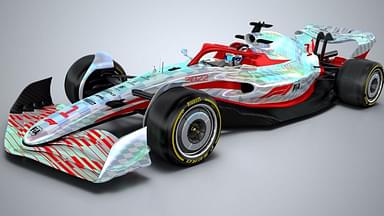The 2019 season is a few months away, but the FIA has already rolled out rule changes, so as to make the sport more exciting for the fans.
1) Driver weight being considered separately
For a long time, driver weight and car weight for considered at a single entity, the combined figure for which was 734 kg for the 2018 season. This gave the lighter drivers an advantage, as more ballast weight could be added to cover the buffer and optimize the balance of the car.
From the 2019 season, driver weight will be considered separately to the car, which is proposed to be mandated at a minimum 80 kg. If a driver falls short of this figure, additional ballast will be added adjacent to the driver’s seat to reach the mark.
In the round-up:
• F1's tallest driver pleased with weight rule change for 2019
• New aerodynamic rules means changes for Haas
• Bottas receives Bandini trophyhttps://t.co/uCUmWPXiaN#F1— RaceFans Live (@racefanslive) May 7, 2018
2) Increase in fuel load limit
With race cars getting heavier and more powerful over the years, more fuel started getting burnt. And with the allowance previously set at 105 kg, it meant a lot of lifting and coasting throughout the race in order to comply to fuel allowance.
From the 2019 season, the fuel load limit is set at 110 kg, which would most certainly allow racers to drive at their engine’s full potential for almost the entirety of the race, and thus help them push their boundaries even further.
3) Aerodynamics Rule Changes
The aerodynamics rule changes are probably the most exciting of all new rules, with changes in both front and rear wings designs bringing heaps of changes in racing dynamics.
The front wings will become bigger, but less complex, getting rid of those byzantine winglets , smaller endplates and fewer flaps. The simplification of front brake ducts will work in unison with these changes, to use the ducts for their authentic cooling purpose, rather than aerodynamic gain.
Does Wolff have a point? #F1
More 👉 https://t.co/SvBd749V9o https://t.co/SvBd749V9o
— CRASH.NET/F1 (@CRASH_NET_F1) January 8, 2019
Ross Brawn is "not satisfied" with the pace of future #F1 rule changes, but insists consulting all the teams is the right thing to dohttps://t.co/63voUMKhRj
— Autosport (@autosport) January 6, 2019
The rear wings will also be deeper and wider, which increases the power of DRS, but at the same time creates more drag will DRS is not active.
The technicalities behind all these changes suggest that the 2019 regulation changes are aimed at improving the on-track spectacle, at the cost of a speed penalty. But one thing’s for sure, we can definitely brace ourselves for much more closely contested races in the upcoming season.




